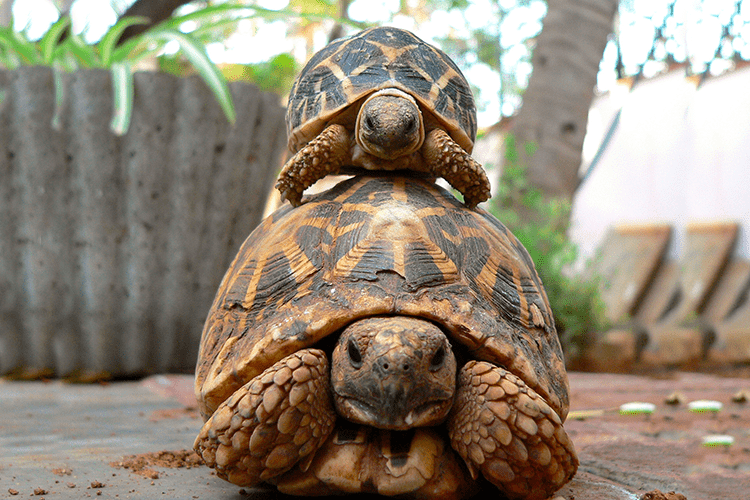
Star turtle
Friendly and unpretentious, star tortoises have a truly amazing coloration and are considered the most beautiful land tortoises for home keeping. They are very smart and eventually even begin to recognize their owner. With good care, a star tortoise can live up to 80 years!
The star tortoise (or, as it is also called, the Indian star tortoise) is an unpretentious, friendly pet, characterized by a rather miniature size and unusual coloration: yellow lines on each shield of a dark shell form beautiful patterns resembling stars. Thanks to this feature, the turtle is called star-shaped.
The star tortoise is considered by many to be the most beautiful land tortoise of all captive species.
The length of its carapace averages 15 cm (males) and 25 cm (females), some species can reach 20 and 36 cm in length, respectively.
Lifespan
Star turtles are long-lived. Data on their average life expectancy vary, but usually they fit in the range from 30 to 80 years. Much depends on the conditions of detention and feeding. As a rule, in captivity, provided with proper care, the star tortoise lives much longer than in the wild, where it is threatened by predators and fires.

Features of maintenance and care
Star turtles are not only friendly and very beautiful, but also completely unpretentious in their content. They feel great when placed both in the aquarium and in a spacious box. The main thing is that the pet cannot get out of the “house” without permission, and other pets do not disturb the turtle.
The minimum length of a star turtle tank is 100 cm and the width is 60 cm. The larger the aquarium, the slower it will become dirty and the more comfortable it will be for your pet.
Optimum temperature in the aquarium: from +27 to 32? C and +25? C at night, humidity is high. Star turtles are tropical animals, and the combination of high humidity and low temperature is extremely harmful for them, so the temperature in the aquarium must be strictly controlled.
UV rays are essential for the star tortoise to absorb calcium and vitamin D3 well, and therefore for shell and bone health. In the conditions of housing and in our climate, the turtle cannot receive enough light, so a UF lamp for reptiles and a heating lamp must be installed in the aquarium.
The heating zone in the aquarium should be one, the ideal temperature in this zone is +35? The rest of the area should be relatively cool, with standard star tortoise temperatures. In addition, the pet will need a small shelter with high humidity (the inside may be damp moss, grass or earth) where the turtle can rest from time to time.
Despite being a terrestrial tortoise, the star tortoise is also likes to swim, plus, it is very beneficial for her health, so a small pool (with a water level up to the turtle’s neck) with clean water is placed in the aquarium. If there is no pool, then you can bathe the turtle in a basin in warm, stagnant water. When bathing, the pet’s head should always be above the surface of the water.
Drinking water in the drinker will be replaced daily with clean water. Ready-made balanced diets, plants, succulent grass, some vegetables and fruits act as the main food for herbivorous turtles.
Despite the friendly disposition and ability to recognize the owner, the star tortoise should not be picked up often, because. any contacts are stressful for her. It is very important to explain this to the children so that they do not disturb the turtle with or without reason.
Distribution
The birthplace of star pets is India – the entire territory from the states of Orissa to the south of Hindustan – as well as the south of Pakistan, Sri Lanka and the islands closest to it. Star turtles choose forests with dense shrubs and high humidity as habitats. Depending on the location, star turtles can vary slightly in appearance.





